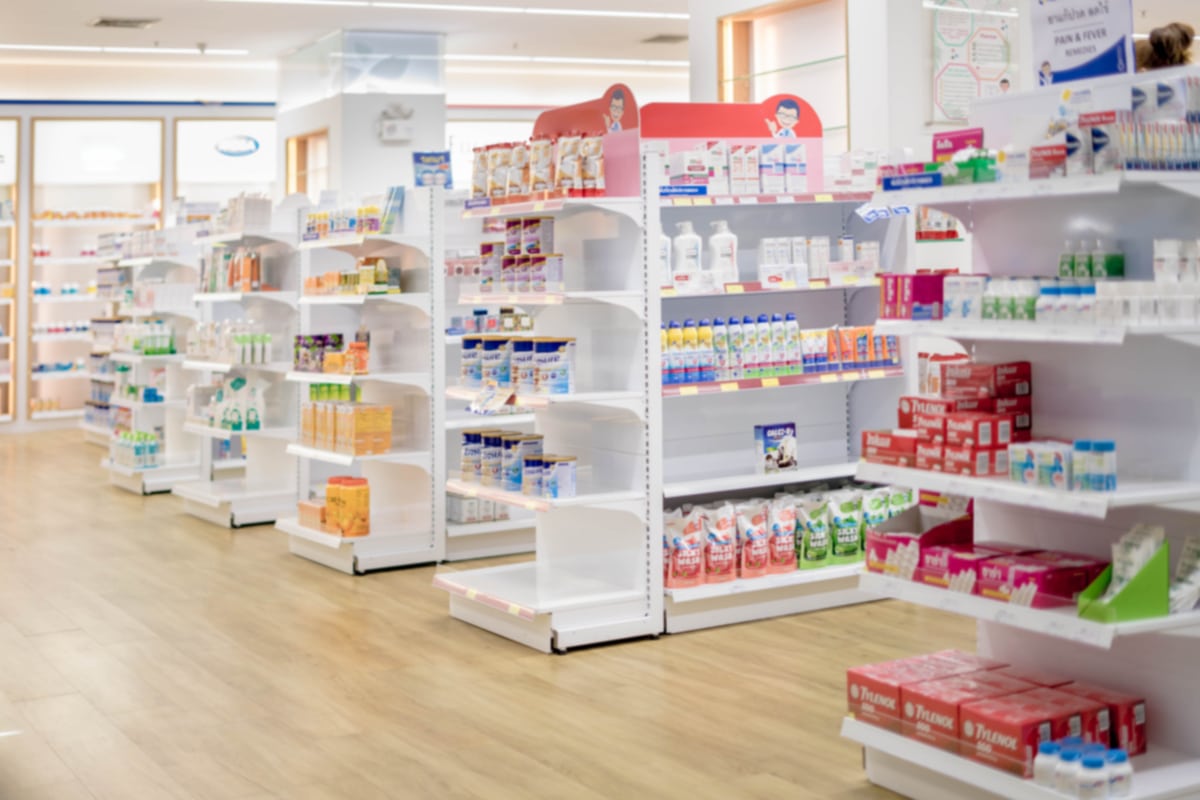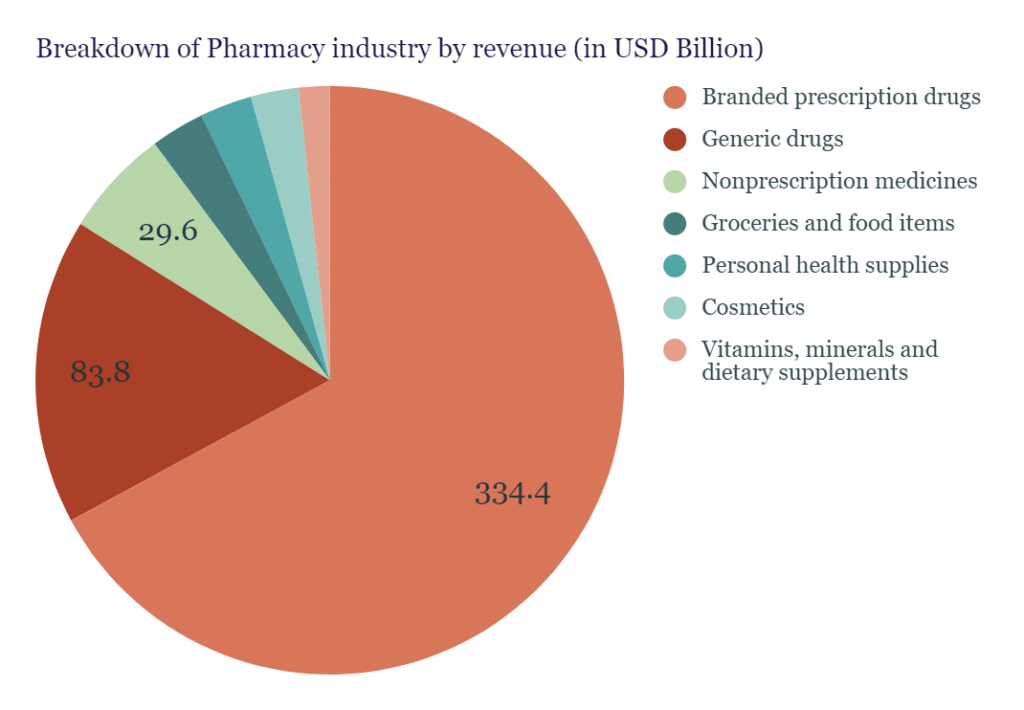How Profitable are Pharmacies and Drug Stores in 2024?

With a market size of $569.8 billion in 2023, the US Pharmacies and Drug Stores industry experienced continued revenue growth. But with over 45,000 pharmacies and drug stores vying for a piece of the pie, what does this mean for pharmacies? How much can a pharmacy expect to earn, and what are the costs involved in setting one up?
In this article, we’ll break down the market segments, average revenues, startup costs, and profitability metrics for the pharmacies and drug stores industry.
Using data from industry sources and insights from over 4,700 franchised pharmacies and drug stores, we provide a comprehensive financial overview of the Pharmacy industry in 2023. Dive in to discover the potential of running a pharmacy and the factors that influence its profitability.
Pharmacy Industry Overview
As per IBIS, the pharmacy industry in the US represented revenue of $569.8 billion in 2023 and is expected to grow to $683.8 billion in 2028.
Branded prescription drugs represent the largest share ($334.4 billion), followed by generic drugs ($83.8 billion), Nonprescription medicines ($29.6 billion), groceries and food items ($14.8 billion), personal health supplies ($14.2 billion), cosmetics ($13.1 billion) and vitamins, minerals and dietary supplements ($8.5 billion). Yet, with over 45,000 pharmacies across the country, the competition is also fierce.

What is the average revenue of the Pharmacy Industry?
Using the same source as earlier, it’s safe to assume that the average turnover for the pharmacy industry is around $15,196,000. Indeed, the pharmacy industry was worth $569.8 billion in 2023, and there are about 45,000 pharmacies across the US.
The average pharmacy generates over 70% of its revenue from prescription medication sales. While prescription medications can be expensive, especially for consumers without insurance, many are deemed necessary purchases, as they ensure the consumer’s well-being.
Yet, not all pharmacies have the same yearly revenue. Logically, some will earn more than others because of many factors like location, popularity, per capita disposable income, number of people with private health insurance, number of adults aged 65 and older, number of physician visits, federal funding for Medicare and Medicaid, etc.
The average Pharmacist salary in the United States is $149,913 in 2023, but the range typically falls between $141,247 and $159,677. Salary ranges can vary widely depending on many important factors, including education, certifications, additional skills, and the number of years you have spent in your profession.
How much does it cost to open a pharmacy?
On average, it costs between $257,000 and $563,000 to open a pharmacy.
This includes various costs such as leasehold improvements/buildout, lease deposit, furniture, fixtures and equipment, computer & office, leasehold improvements, architectural and engineering services, retail and promotional inventory, signage, insurance, permits and licenses, professional fees, etc.
- Leasehold Improvements (23%): construction and/or remodeling costs to build or renovate the facilities.
- Equipment (22%): office equipment, furniture, fixtures, computer hardware and software.
- Insurance (2%)
- Exterior Signage (2%)
- Grand Opening Marketing (1%): grand opening marketing expenses as well as local advertising.
- Inventory including merchandise (2%)
- Working capital (1%): funds needed to operate the business to pay for operating costs (such as insurance, and salaries)
- Additional Funds (48%): additional fund for 3-months is required.

How profitable is a Pharmacy?
The prevalence of low-priced generic drugs has cut into industry profitability. Waning wage costs have enabled profit to stabilize.
Using the same source as earlier, purchase costs inflate as the industry enterprises expand the scope of their product offerings. In 2023 purchases (as in costs of sales) are expected to make 69.3% of the average pharmacy revenue, the largest expense in the industry.
Wages are expected to account for 9.5% of industry revenue in 2023, declining from 9.6% in 2018. Pharmacies are highly reliant on their workforce, particularly pharmacists and pharmacy technicians, which has helped maintain wage growth.
Companies in the pharmacies and drug stores industry experience varying profits, depending on the size and scope of their operations. In 2023, EBITDA is expected to account for 3.9% of the average industry enterprise revenue.





